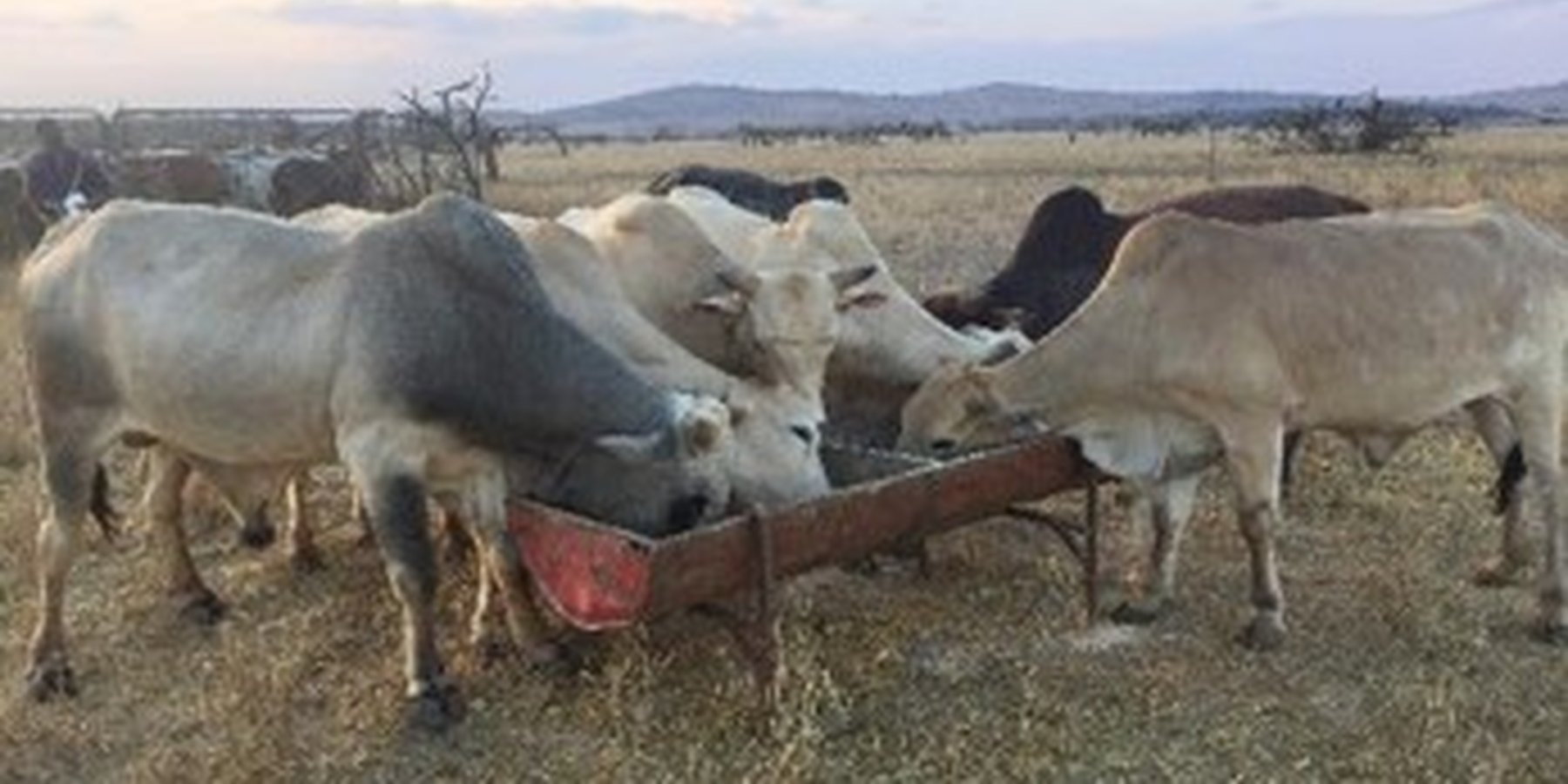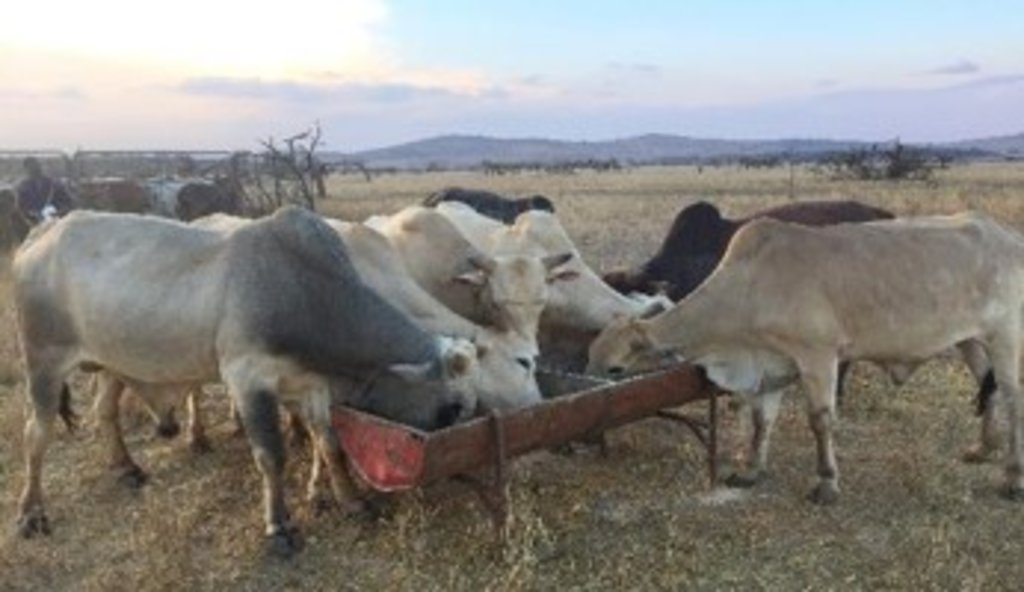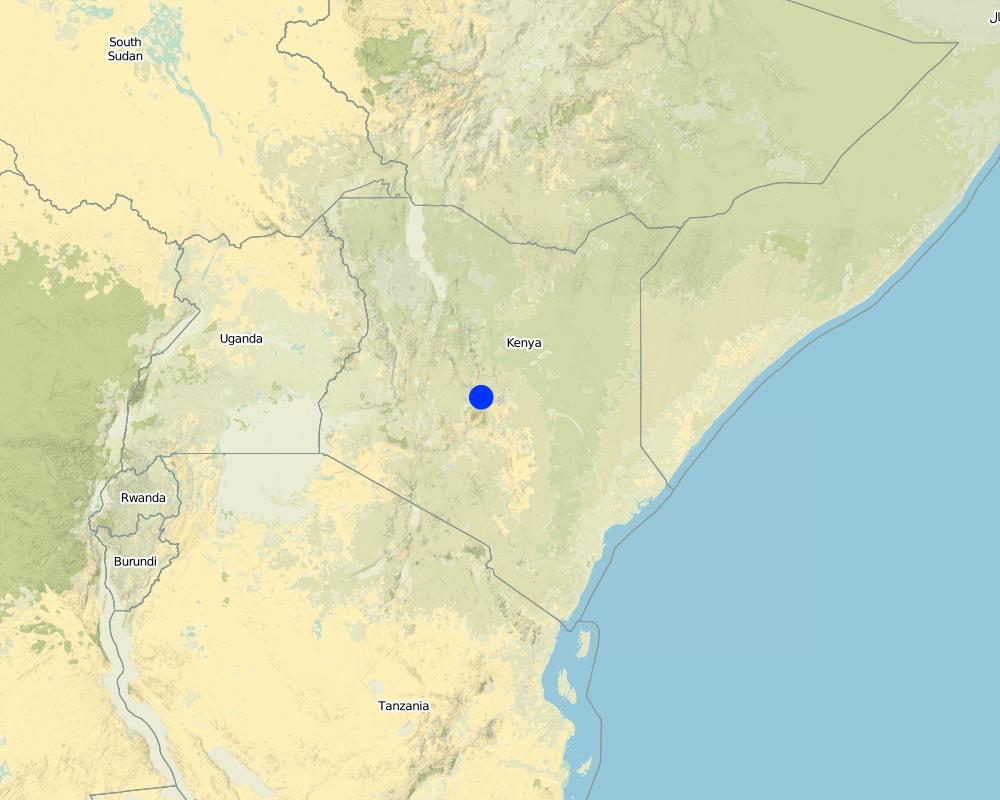Northern Rangelands Trust - Livestock to Markets [كينيا]
- تاريخ الإنشاء:
- تحديث:
- جامع المعلومات: Peter Tyrrell
- المحرر: –
- المُراجع: Rima Mekdaschi Studer
approaches_3435 - كينيا
- Northern Rangelands Trust - Livestock to Markets: 10 أكتوبر، 2018 (public)
- Northern Rangelands Trust - Livestock to Markets: 3 سبتمبر، 2018 (inactive)
- Northern Rangelands Trust - Livestock to Markets: 6 أكتوبر، 2018 (inactive)
- Northern Rangelands Trust - Livestock to Markets: 24 مايو، 2018 (inactive)
- Northern Rangelands Trust - Livestock to Markets: 5 يونيو، 2018 (inactive)
- Northern Rangelands Trust - Livestock to Markets: 27 إبريل، 2018 (inactive)
عرض الأقسام
توسيع الكل طي الكل1. معلومات عامة
1.2 تفاصيل الاتصال بالأشخاص الرئيسيين لمصدر المعلومات والمؤسسات المعنية بتقييم وتوثيق النهج
الشخص (الأشخاص) الرئيسي لمصدر المعلومات
Patrick Ekodere:
كينيا
اسم المشروع الذي سهّل توثيق/تقييم النهج (إذا كان ذلك على صلة)
Book project: Guidelines to Rangeland Management in Sub-Saharan Africa (Rangeland Management)1.3 الشروط المتعلقة باستخدام البيانات الموثقة من خلال WOCAT
متى تم تجميع البيانات (ميدانيا)؟:
13/03/2018
يوافق جامع المعلومات والشخص (لاشخاص) الرئيسي لمصدر المعلومات على الشروط المتعلقة باستخدام البيانات الموثقة من خلال WOCAT:
نعم
2. وصف نهج الإدارة المستدامة للأراضي
2.1 وصف موجز للنهج
Northern Rangeland Trust works across the rangelands of northern Kenya to improve market access to pastoral communities across 20,000 km2. The program improves local revenue generation, incentives to reduce herd size, and channels funding into improved rangeland management across the conservancies.
2.2 وصف تفصيلي للنهج
وصف تفصيلي للنهج:
The Northern Rangelands Trust (NRT) is a non profit organisation established in 2004. It works with communities to develop community conservancies, to transform peoples lives, secure peace and conserves natural resources in northern Kenya. NRT works cross 20,000 km2, with 33 conservancies.
NRT established NRT Trading to identify, incubate, and pilot, and scale sustainable business across the NRT conservancies. The help to incubate and run business that encourages conservation ethics, while improving livelihoods.
The Livestock to Market Program (LTM) was established in 2006 as a partnership between NRT, NRT affiliated conservancies, and two private conservancies - Ol Pejeta and Lewa. The program was funded by Flora and Fauna International and The Nature Conservancy. The program was designed to: to build resilient livelihoods for local pastoralists through providing a local, equitable, reliable, fair market for a large number of cattle; provide incentives to increase production viability of cattle, reduce herd size and avoid losses during droughts; build conservation momentum; directly benefit individual conservancies through sale levies.
The model works to first buy cattle from NRT affiliated conservancies, these cattle are sold on weight and grade, and tries to embrace a more market-driven approach. Once bough cattle is quarantined and vaccinated on Lewa. They are then fattened and sold on to different markets depending on size and age.
The program aims to benefit local people through providing an equitable market with similar or better rates than available and through revenue generation for each conservancy - to provide health and education benefit. A key goal of this benefit system is through channeling conservancy levies and behavioral change into improved rangeland management. Improved management, implemented by conservancies, will lead to improved productivity of the rangelands, increased livestock quality, increased revenue for pastoralists, and ultimately contribute to the goals of NRT - Peace and security; resilient livelihoods; productive rangelands; stable wildlife; and growing enterprise.
NRT has a fully fledged grazing management team working across the conservancies to enhance pasture and land management is upheld by all members, this working by involving alienation of dry season and wet season grazing corridors in order to guarantee animal –wildlife sustainable grazing. Several technologies are implemented under this approach to improve rangeland management. Strategic destocking and cattle bunching in conservancies is one method. Supplementary feed is also provided to increase the weight gain of cattle before sale.
2.3 صور عن النهج
2.5 البلد/المنطقة/المواقع التي تم تطبيق النهج فيها
البلد:
كينيا
المنطقة/الولاية/المحافظة:
Baringo, Garissa, Isiolo, Laiikipia, Meru, Samburu, Turkana and Lamu Counties
Map
×2.6 تواريخ بدء وإنهاء تنفيذ النهج
أشر إلى سنة البدء:
2006
التعليقات:
In 2014 NRT spun off its commercial activities into a stand alone social enterprise, Northern Rangelands Trading Ltd (NRT Trading).
2.7 نوع النهج
- قائم على مشروع/برنامج
2.8 الغايات/الأهداف الرئيسية للنهج
Assist pastoralists and families in the NRT Conservancies to build resilient livelihoods by providing a local, equitable, reliable, fair market for large numbers of cattle.
Provide incentives to pastoralists to manage cattle for ready markets and over time reduce herd sizes to avoid loses due to drought among other factors, in an effort to improve rangeland health and productivity.
Gain conservation leverage by linking market access to conservation outcomes.
Directly benefit Conservancies through purchase and sale levies.
Involve a complete value chain model i.e. involving pastoralist producers, disease control actors & quarantine, designated fattening ranches, slaughter, and marketing.
2.9 الظروف التي تمكن أو تعيق تنفيذ التقنية/التقنيات المطبقة بموجب النهج
المعايير والقيم الاجتماعية /الثقافية/ الدينية
- معيق
Pastoral societies do not necessarily have cattle for revenue generation, and they currently do not manage cattle for weight and the beef market.
توفر/الوصول إلى الموارد والخدمات المالية
- تمكين/تمكيني
The spread of Mpesa (Mobile Money) is helping to improve the ability for people to share money across the region.
- معيق
Lack of funding to support disease control in the conservancies, especially those which may hinder the movement and sale of livestock. e.g FMD.
الإطار المؤسساتي
- تمكين/تمكيني
التعاون/التنسيق بين الجهات الفاعلة
- معيق
Certain value chain operations are hindered by the lack of cohesion between country and national government. This includes disease control and taxes.
حوكمة الأراضي (صنع القرار والتنفيذ والإنفاذ)
- معيق
There are challenges in implementing improved grazing management across many of the conservancies due to a lack of ability to enforce.
المعرفة حول الإدارة المستدامة للأراضي، والوصول إلى الدعم الفني
- معيق
High costs of technical expertise needed to upscale grazing and land management.
غير ذلك
- معيق
The region is insecure and hinders the impact and effectiveness of the program.
3. المشاركة وأدوار الأطراف المعنية
3.1 أصحاب المصلحة المعنيون بالنهج وأدوارهم
- مستخدمو الأراضي المحليون/المجتمعات المحلية
27 community conservancies
Land-owners and managers of cattle. They benefit from the sale of cattle through LTM and implement the grazing management plans.
- متخصصون في الإدارة المستدامة للأراضي / مستشارون زراعيون
NRT - Grazing management team
Provide technical advise to conservancies to improve grazing management.
- منظمة غير حكومية
Sidai
Sidai is working with community conservancies by selling drugs. LTM purchases some basic veterinary drugs from Sidai outlets.
- الحكومة المحلية
County Government
Extension services for livestock management and disease control. Beneficiaries of county levies.
3.2 انخراط مستخدمي الأراضي المحليين/المجتمعات المحلية في المراحل المختلفة للنهج
| انخراط مستخدمي الأراضي المحليين/المجتمعات المحلية | حدد من شارك وصف الأنشطة | |
|---|---|---|
| المبادرة/التحفيز | تفاعلي | NRT conservancy model creates independent units that have strong leadership and governance structures. These conservancy boards and management are involved and are the drivers at each stage. |
| التخطيط | تفاعلي | Conservancies are involved in planning stages. |
| التنفيذ | الدعم الخارجي | NRT-LTM runs the markets and livestock fattening with support from both local and private conservancies. |
| الرصد/التقييم | سلبي | Monitoring is done through the NRT monitoring systems. |
3.3 مخطط التدفق (إذا كان متاحًا)
3.4 اتخاذ القرار بشأن اختيار تقنية/تقنيات الإدارة المستدامة للأراضي
حدد من الذي قرر اختيار التقنية/التقنيات التي سيتم تنفيذها:
- جميع الجهات الفاعلة ذات الصلة، كجزء من نهج تشاركي
اشرح:
The NRT grazing management teams work with the community conservancies officials and board to establish grazing management plans and implement restoration of degraded rangelands.
حدد على أي أساس تم اتخاذ القرارات:
- تقييم المعرفة الموثقة جيدًا بشأن الإدارة المستدامة للأراضي(اتخاذ القرارات القائمة على الأدلة)
- خبرة وآراء شخصية(غير موثقة)
4. الدعم الفني وبناء القدرات وإدارة المعرفة
4.1 بناء القدرات/التدريب
هل تم تقديم التدريب لمستخدمي الأراضي / الأطراف المعنيين الآخرين؟:
نعم
حدد من تم تدريبه:
- مستخدمو الأراضي
إذا كان ذلك على صلة، حدد الجنس والعمر والوضع والعرق وما إلى ذلك.
NRT governance department conducts effective leadership and management training to conservancy leadership across the board.
شكل التدريب:
- اجتماعات عامة
4.2 خدمة استشارية
هل يملك مستخدمو الأراضي وصولا إلى خدمة استشارية؟:
نعم
حدد ما إذا كانت الخدمة الاستشارية متوفرة:
- في حقول مستخدمي الأراضي
وصف/تعليقات:
Some support is provided by county government extensions services. NRT also provides support.
4.3 تعزيز المؤسسات (التطوير التنظيمي)
هل تم إنشاء أو تعزيز مؤسسات من خلال هذا النهج؟:
- نعم، إلى حد كبير
حدد المستوى (المستويات) التي تم فيها تعزيز أو إنشاء المؤسسات:
- محلي
صف المؤسسة والأدوار والمسؤوليات والأعضاء وما إلى ذلك.
Community conservancies have gained funding to implement projects and strengthened their knowledge on livestock production systems and rangeland management.
حدد نوع الدعم:
- مالي
- بناء القدرات/التدريب
4.4 الرصد والتقييم
هل يشكل الرصد والتقييم جزءا من النهج؟:
نعم
التعليقات:
Monitoring and evaluation are annually conducted through the mandatory annual statutory audit by contracted reputable audit firms.
Internal production monitoring is done through the monthly internal tracking systems.
إذا كانت الإجابة بنعم، فهل من المقصود استخدام هذه الوثائق للمراقبة والتقييم؟:
كلا
4.5 البحوث
هل كانت البحوث جزءًا من النهج؟:
نعم
حدد المواضيع:
- الاقتصاد / التسويق
أعط تفاصيل إضافية وأشر إلى من قام بالبحوث:
The research formed the basis of choosing to scale up the programme and recommendations to run the programme as a business.
5. التمويل والدعم المادي الخارجي
5.1 الميزانية السنوية لمكون الإدارة المستدامة للأراضي في النهج المذكور
التعليقات (على سبيل المثال المصادر الرئيسية للتمويل/الجهات المانحة الرئيسية):
The program is supported by a loan from The Nature Conservancy, that is repayable in 10 years.
5.2 الدعم المالي/المادي المقدم لمستخدمي الأراضي
هل حصل مستخدمو الأراضي على دعم مالي/ مادي لتنفيذ التقنية/ التقنيات؟:
نعم
إذا كانت الإجابة بنعم، حدد نوع (أنواع) الدعم والشروط والمزودين:
Financial support comes in the form of improved livestock markets.
5.3 إعانات لمدخلات محددة (بما في ذلك العمالة)
- غير موجود
5.4 الائتمان
هل تم توفير ائتمان في إطار نهج أنشطة الإدارة المستدامة للأراضي؟:
كلا
5.5 حوافز أو وسائل أخرى
هل تم استخدام حوافز أو أدوات أخرى لتشجيع تنفيذ تقنيات الإدارة المستدامة للأراضي؟:
كلا
6. تحليل الأثر والتصريحات الختامية
6.1 آثار النهج
هل ساهم النهج في تمكين مستخدمي الأراضي المحليين وتحسين مشاركة الأطراف المعنية؟:
- لا
- نعم، قليلا
- نعم، باعتدال
- نعم، إلى حد كبير
Through the strengthening of community conservation.
هل ساعد النهج مستخدمي الأراضي على تنفيذ وصيانة تقنيات الإدارة المستدامة للأراضي؟:
- لا
- نعم، قليلا
- نعم، باعتدال
- نعم، إلى حد كبير
Provide financial incentives and technical support from NRT.
هل نجح النهج في تعبئة/تحسين الوصول إلى الموارد المالية لتنفيذ الإدارة المستدامة للأراضي؟:
- لا
- نعم، قليلا
- نعم، باعتدال
- نعم، إلى حد كبير
Through financing of conservancy operation which supports governance, security and conservation programs ($80,000 over 4 years).
هل أدى النهج إلى تحسين معرفة وقدرات مستخدمي الأراضي على تنفيذ الإدارة المستدامة للأراضي؟:
- لا
- نعم، قليلا
- نعم، باعتدال
- نعم، إلى حد كبير
Yes through the outreach from NRT grazing management team.
هل ساهم النهج في بناء/تعزيز المؤسسات والتعاون بين الأطراف المعنية؟:
- لا
- نعم، قليلا
- نعم، باعتدال
- نعم، إلى حد كبير
Strengthen ties between community conservancies, NRT and private conservancies.
هل ساهم النهج في تمكين الفئات المحرومة اجتماعيا واقتصاديا؟:
- لا
- نعم، قليلا
- نعم، باعتدال
- نعم، إلى حد كبير
Empower marginalized pastoralists through the provision of $1,982,210 over 4 years in income to 14,864 families.
هل أدى هذا النهج إلى تحسين الأمن الغذائي / تحسين التغذية؟:
- لا
- نعم، قليلا
- نعم، باعتدال
- نعم، إلى حد كبير
Through financial provision to pastoral people.
هل أدى النهج إلى تحسين الوصول إلى الأسواق؟:
- لا
- نعم، قليلا
- نعم، باعتدال
- نعم، إلى حد كبير
This created regional livestock markets with 5630 cattle bought over 4 years.
6.2 المحفز الرئيسي لقيام مستخدمي الأراضي بتنفيذ الإدارة المستدامة للأراضي
- زيادة الإنتاج
There is an increasing shift towards a production focused livestock industry in pastoral areas.
- زيادة الربح (القدرة)، وتحسين نسبة التكلفة إلى العائد
This system provides an opportunity for community members to benefit from reliable prices at markets.
- الحد من تدهور الأراضي
This project works with community conservancies to prevent and reduce land degradation, which has become a widespread problem in the north of Kenya. This is done through the implementation of new grazing systems, strengthening resource governance, and restoring degraded areas through reseeding and bush clearing.
6.3 استدامة أنشطة النهج
هل يمكن لمستخدمي الأراضي المحافظة على استدامة ما تم تنفيذه من خلال النهج (بدون دعم خارجي)؟:
- لا
إذا كان الجواب لا أو غير متأكد، حدد ذلك وعلق عليه:
NRT - Trading is a central actor in the LTM system, and controls the purchasing and movement of cattle, and manages the finances of the sales. The landowners do not purchase, fatten or sell livestock, they rely on NRT.
6.4 نقاط قوة/مزايا النهج
| نقاط القوة/ المزايا/ الفرص من وجهة نظر مستخدمي الأراضي |
|---|
| Access to a reliable, close, and equitable weight and grade based market for cattle. |
| Opportunities to restore and prevent landscape degradation through funding provided to communities, support from NRT, and through the shift towards higher quality beef, which requires improved rangeland management to meet demands. |
| Funding for community projects through conservancies. |
| نقاط القوة/ المزايا/ الفرص من وجهة نظر جامع المعلومات أو غيره من الاشخاص الرئيسيين لمصدر المعلومات |
|---|
| Strengthening institutions of grazing management, which should improve the ability to implement sustainable rangeland management technologies. |
| Creating a shift to a production based focus on livestock management, which should increase livestock quality, and the underlying rangeland productivity. |
6.5 نقاط الضعف/ العيوب في المنهج وطرق التغلب عليها
| نقاط الضعف/ المساوىء/ المخاطر من وجهة نظر مستخدم الأراضي | كيف يمكن التغلب عليها؟ |
|---|---|
| Unfair or inequitable pricing of livestock. | Clarity on revenue sharing from NRT - Trading. Prices per weight and grade clear and fair. |
| Some pastoralists do not want to sell cattle, and are not motivated by increasing revenue through market-based systems. |
| نقاط الضعف/ المساوىء/ المخاطر من وجهة نظر جامع المعلومات أو غيره من الاشخاص الرئيسيين لمصدر المعلومات | كيف يمكن التغلب عليها؟ |
|---|---|
| Lack of ownership and participation in the NRT LTM may isolate community members and create friction over finances and project ownership. | |
| Land and resources on the fattening ranches are limited and land invasions have complicated this. |
7. المراجع والروابط
7.1 طرق جمع/مصادر المعلومات
- التجميع من التقارير والوثائق الأخرى الموجودة
Websites, power-point presentations, and conversations with NRT staff.
7.3 روابط للمعلومات ذات الصلة المتوفرة على الإنترنت
العنوان/الوصف:
NRT - LTM Website
عنوان الرابط URL:
http://www.nrt-kenya.org/livestock/
الروابط والوحدات المواضيعية
توسيع الكل طي الكلالروابط
لا يوجد روابط
الوحدات المواضيعية
لا يوجد وحدات مواضيعية






